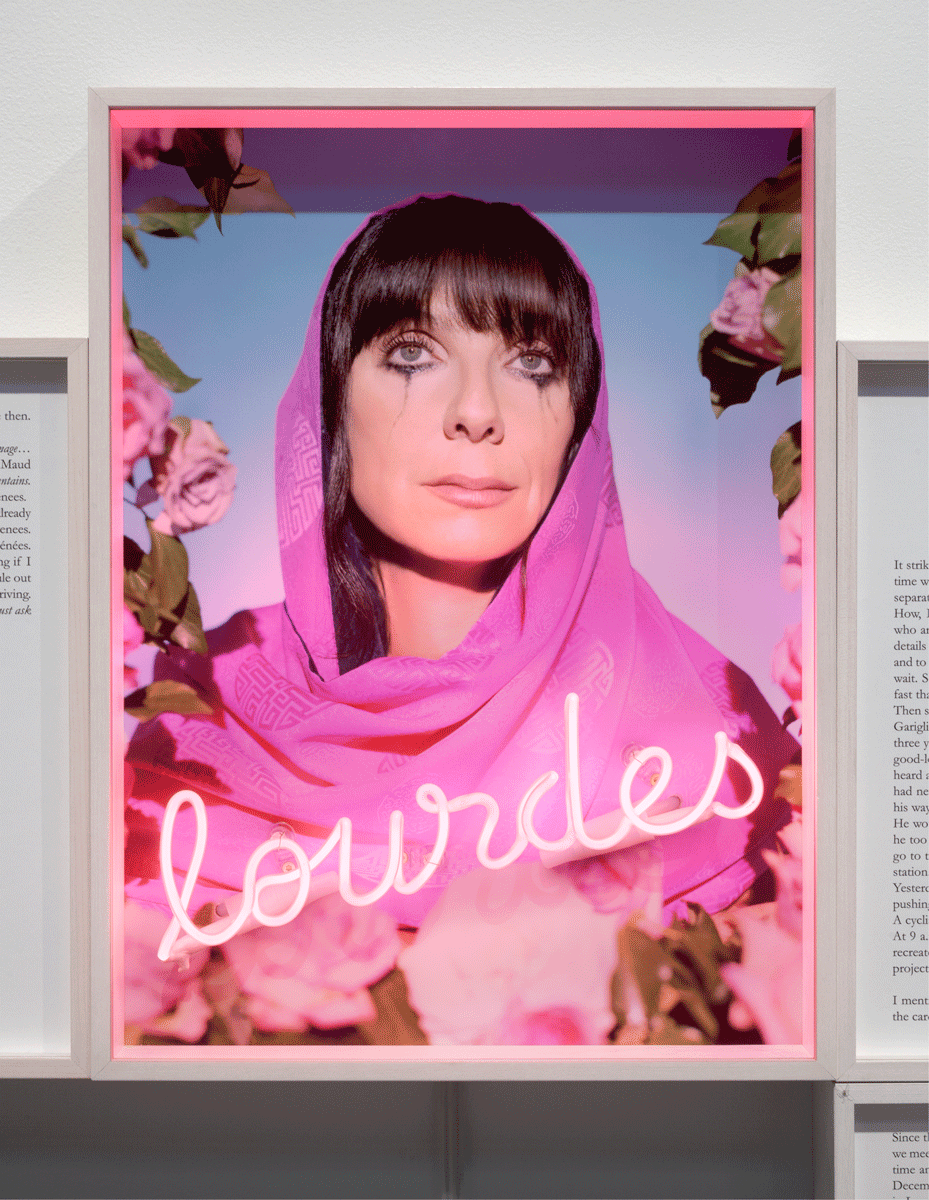
Detail view of “Where and when? Lourdes,” (2005/2008). 15 texts, 17 photos, 1 lenticular print, 1 shelf, 5 porcelain candle holders, 68 marble plates on steel frame. Dimensions vary depending on installation. © 2013 Sophie Calle/Artists Rights Society (ARS), New York City/ADAGP, Paris. Courtesy the artist and Paula Cooper Gallery, New York CITY. Photo: Steven Probert.
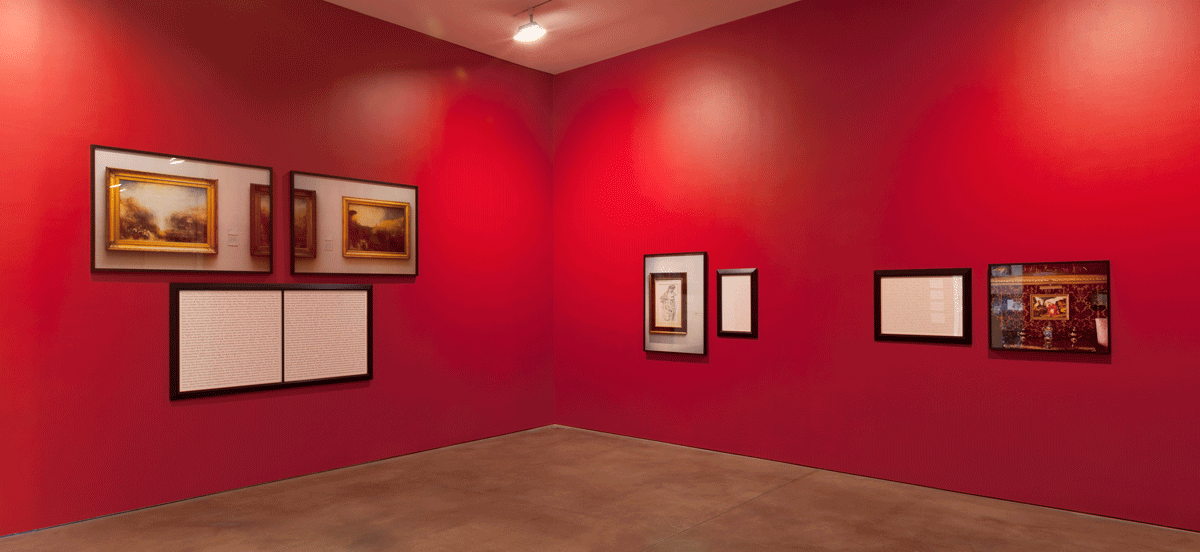
Exhibition view of works from “Purloined,” as exhibited for Sophie Calle: Absence, at Paula Cooper Gallery (2013). © 2013 Sophie Calle/Artists Rights Society (ARS), New York City/ADAGP, Paris. Courtesy the artist and Paula Cooper Gallery, New York City. Photo: Steven Probert.

“Exquisite Pain (Day 14),”(2000). 2 embroidery text panels, 2 photo panels. Overall dimensions: 76 x 52 inches. © 2013 Sophie Calle/Artists Rights Society (ARS). Courtesy the artist and Paula Cooper Gallery, New York City.
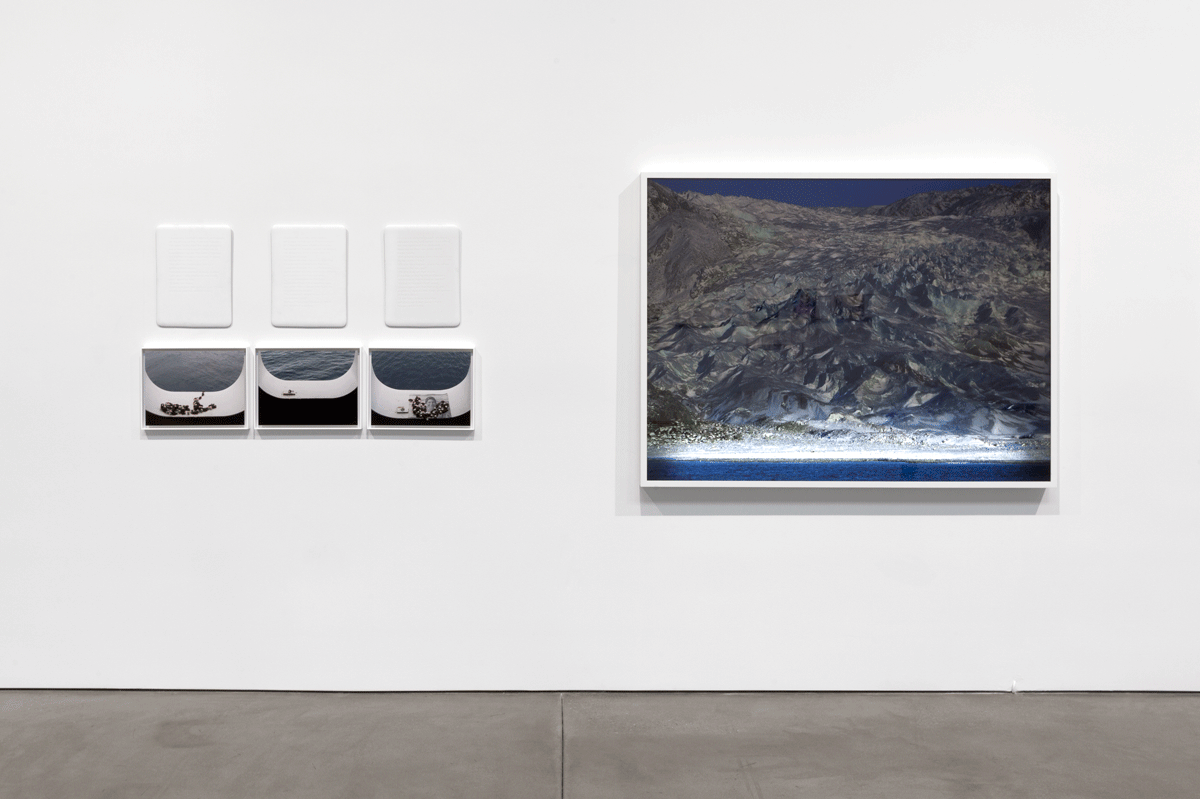
Detail view of “North Pole,” (2009). 1 Duratrans light box, 3 sandblasted porcelain plaques, video, screen, 7 framed color photographs. Dimensions vary depending on installation. © 2013 Sophie Calle/Artists Rights Society (ARS), New York City/ADAGP, Paris. Courtesy the artist and Paula Cooper Gallery, New York City. Photo: Steven Probert.
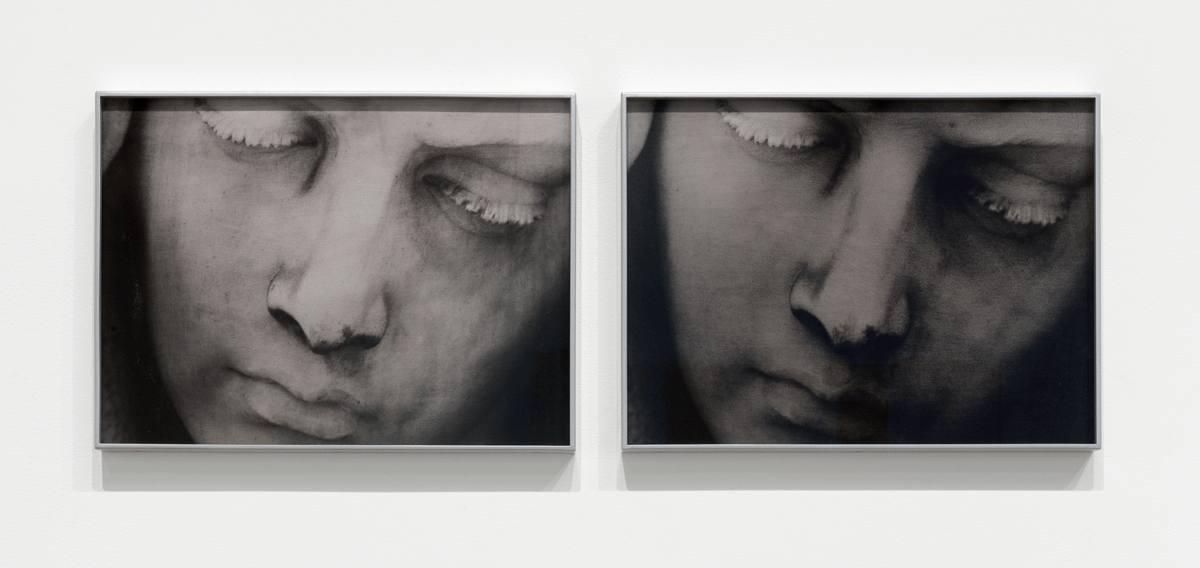
“Les Cils,” (2013). Two framed carbon prints. 15 x 20 inches each. © 2013 Sophie Calle/Artists Rights Society (ARS), New York City/ADAGP, Paris. Courtesy the artist and Paula Cooper Gallery, New York City. Photo: Steven Probert.
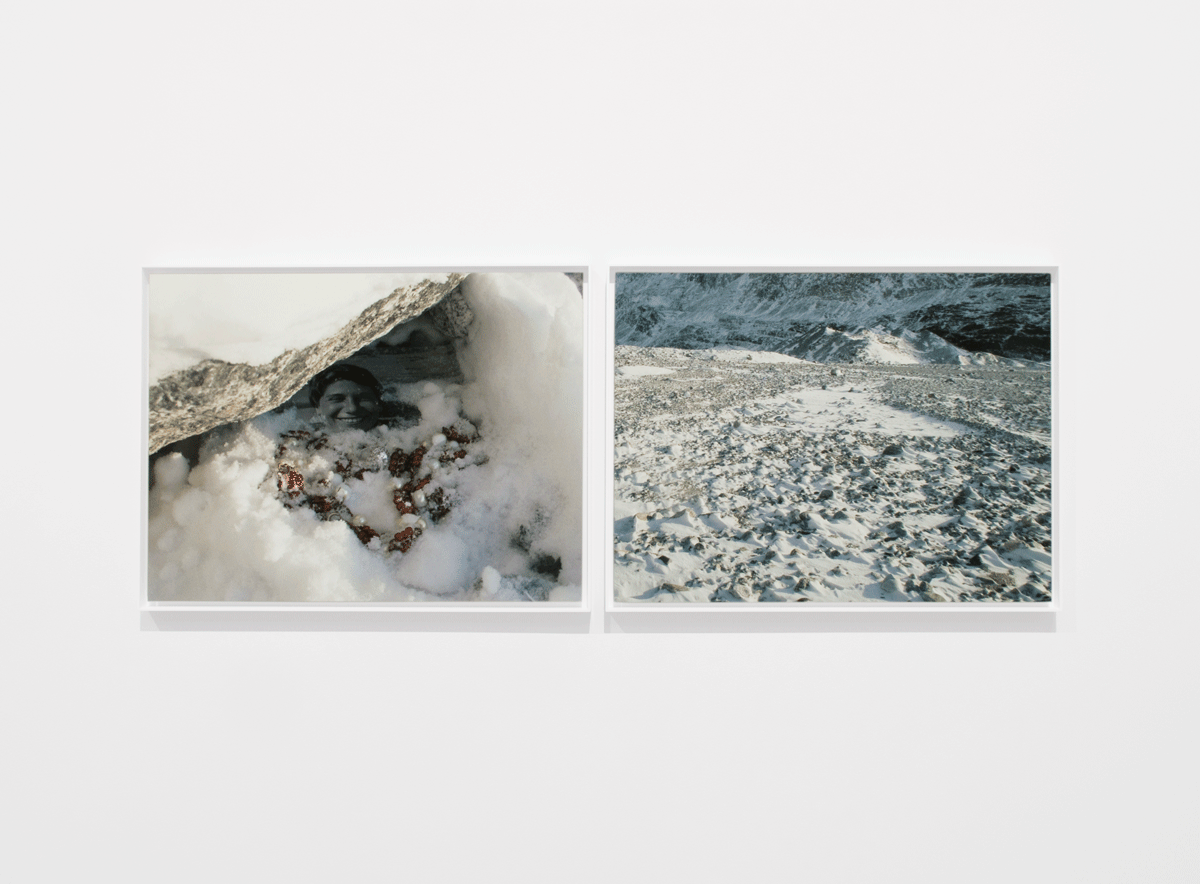
Detail view of “North Pole,” (2009). 1 Duratrans light box, 3 sandblasted porcelain plaques, video, screen, 7 framed color photographs. Dimensions vary depending on installation. © 2013 Sophie Calle/Artists Rights Society (ARS), New York City/ADAGP, Paris. Courtesy the artist and Paula Cooper Gallery, New York City. Photo: Steven Probert.
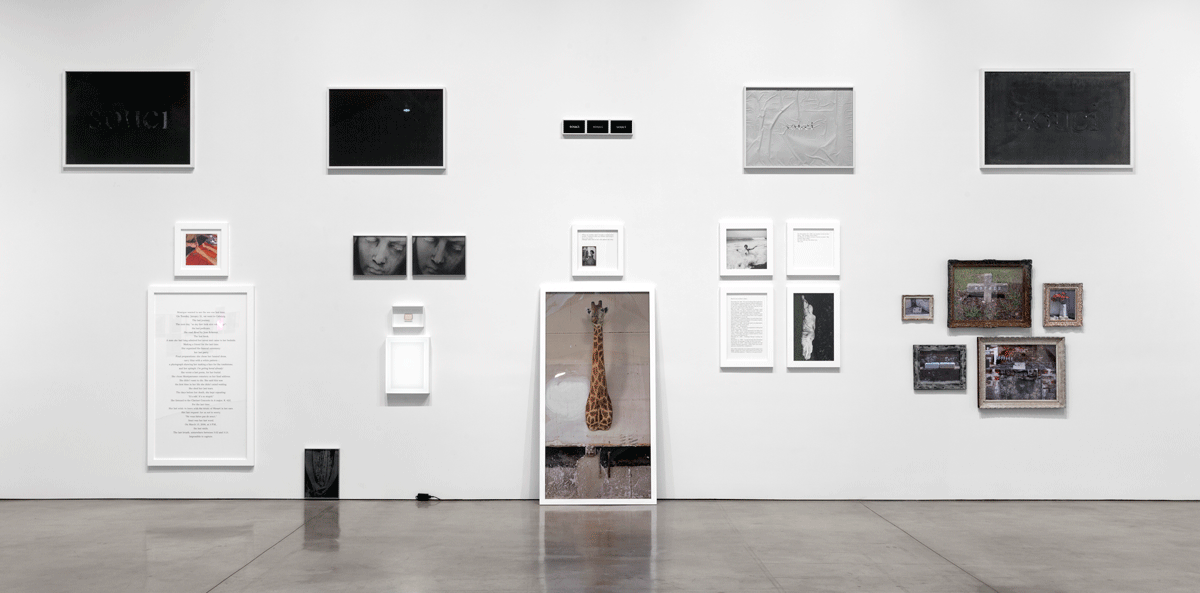
Exhibition view of works from “Rachel, Monique,” as exhibited for Sophie Calle: Absence, at Paula Cooper Gallery (2013). © 2013 Sophie Calle/Artists Rights Society (ARS), New York City/ADAGP, Paris. Courtesy the artist and Paula Cooper Gallery, New York City. Photo: Steven Probert.
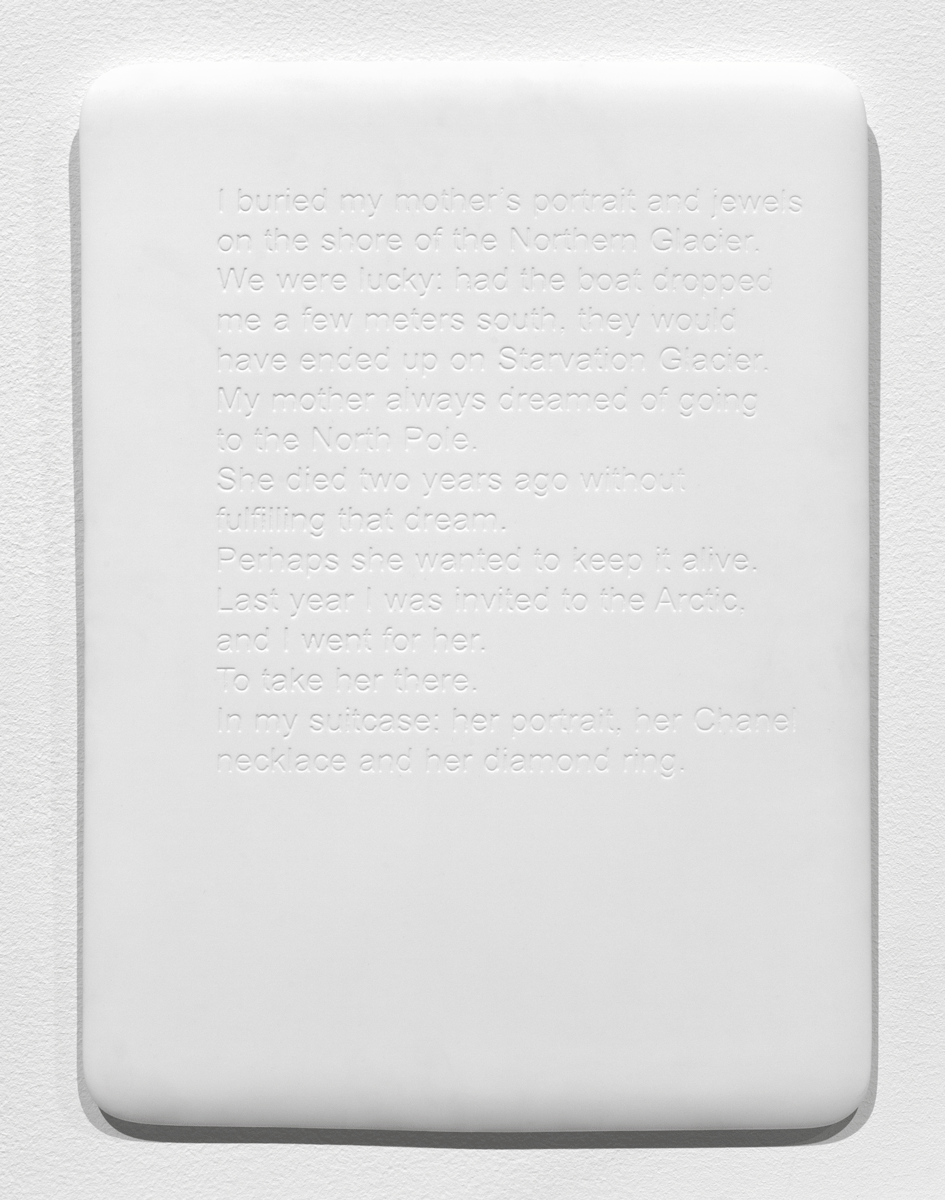
Detail view of “North Pole,” (2009). 1 Duratrans light box, 3 sandblasted porcelain plaques, video, screen, 7 framed color photographs. Dimensions vary depending on installation. © 2013 Sophie Calle/Artists Rights Society (ARS), New York City/ADAGP, Paris. Courtesy the artist and Paula Cooper Gallery, New York City. Photo: Steven Probert.
[](#)[](#)
Sophie Calle
And Give a Kiss to My Mother
If you visit Paula Cooper Gallery to see conceptual artist Sophie Calle’s show “Rachel, Monique,” you pass through two 10-foot columns of pure white embroidery—not unlike entering through the veils of a temple into an inner sanctum. In the center of each column, the word “Souci” is stitched. In French, “Souci” means “Worry”—the last word spoken by Calle’s mother when she urged her daughter to “not worry.” The word itself is immortalized and consecrated throughout the icy gallery space, wrought in different materials—stone, metal, ceramic, fabric—acting as monuments to her mother’s final expression. Sophie’s distinctive prose is framed in between photos and sculptures, sketching the moments leading to her mother’s last breath with unique humor and a tacit sense of acceptance. Artifacts —words, images, gestures—are everywhere, the trappings of a loved one whose absence seems to fill the room. It is impossible to not be overcome with emotion, but Sophie herself takes it in stride.
“It’s very banal,” she says over an espresso, in the hushed, garret-like attic of the gallery (Sophie is in minimal, brand-less black. Dark sunglasses stay on throughout the interview. She takes sugar with her coffee. She is cool, bordering on terse. Very French.) “Everyone experiences death one day,” she continues. “What’s maybe less banal is that my mother was a very extravagant, provocative person and she wanted to be center-stage. So in a way, she was asking to be talked about. I didn’t do this work about her or against her. I did it with her.”
In her long career as a conceptual artist, writer, and photographer, Calle has been called a stalker, a meddler, an interloper, and a manipulative provocateur. She is also one of the most beloved and lauded artists living today, with decades of works made of terrifying bravery, tenderness, and originality. Known for her use of “life as medium,” she first made waves with “Suite Venitienne” (1979) for which she stalked and photographed a stranger over a period of weeks, following him from Paris to Vienna. She’s invited strangers to sleep in her bed to be photographed, and slept one night in a chamber erected at the top of the Eiffel Tower. She’s generously poured years of her life into concepts—working for three weeks as a chambermaid with the sole purpose of collecting the writings and mementos of anonymous hotel guests, and taking long journeys of exploration across the globe. For Calle, time itself seems to be the medium, and artworks flow from the moments of her life, sometimes emerging without preconception. We discuss this process, moving from the garret to the gallery space, mingling among the star-struck visitors who crane their necks to catch her words.
_Did you know that you were making art when you installed the camera in your mother’s hospital room? Did you speak to your mother about collaborating on a piece \[for which\] the subject was her death?_ I put the camera initially, not with the intention of making a work of art, but to be in constant contact with her. I had always heard that when people die they wait for you to leave the room, so they can draw their last breath in privacy. But I wanted to be there. In case she would have something to tell me, last words, et cetera. So the camera became a very friendly companion for her. I was no longer afraid that she would say something and I would miss it. And for her, it gave her a sense that I was in the room with her even when I wasn’t. But I didn’t plan to film and show it. I just did it because I wanted to be close to her.
_Do you think she would have been pleased to see all these people in the gallery, experiencing her death after the fact?_ I am sure. I wouldn’t do the same work, let’s say, about my father who is a very discreet person—very private. To do such work about him would be an aggressive gesture. I would never film the death of my father. I would never show the intimate details because he would not like it. The missing part of the show downstairs \[in the Paula Cooper Gallery\] is the actual movies that I shot of her death. They are not here because I didn’t want to show it in a commercial space. When I put a camera next to her bed, she said, ‘Finally!’ She had been waiting to commemorate her experience of death and was very happy to do so. She wanted to be looked at.
_How did the process of transforming this record into art come about?_ When the Venice Biennale heard that I was filming my mother’s death, they started asking me if I would show it and at first I refused but they insisted that I show it and I relented. I thought that it would make my mother happy. But I couldn’t really watch it at first. When I was working—working on the light or the color, the technical details of post-production—I could handle that. But as soon as it becomes just the work on the wall, I cannot stay on the wall. I don’t watch it generally—I just install it and let others watch.
_Do you feel as though you are still having a living relationship with your mother through the work?_ Very much so, and the work itself is living in some ways. I keep adding pieces. I read her diary after I finished the films, and added work from that. I am talking about her right now. I have a show about her downstairs. I’ve been reading her diary in public. She is there.
\[We pause in front of large photographs of icy glaciers glimpsed through the portholes of a ship. A nest in the ice. A Chanel necklace. The smile of a beautiful woman. After her mother’s death, Sophie had been invited to an artists gathering at the North Pole, and she made time during her journey to perform a special ceremony for her mother, who had always wanted to travel there but never made the journey. Sophie also took her mother’s diamond ring, (which had been an item her mother detested, as it symbolized a bad business deal made in haste by her grandfather during WWII when fleeing the Nazis in France.)\]
_And you took her with you on a journey to the North Pole after her death?_ My mother dreamed about going to the North Pole. I was invited there and I started to think about how I could bring her on the journey. There are many things that I do that I don’t imagine becoming works of art—the trip to the North Pole, for instance, was not something I intended to make art with; it was just something I wanted to do for my mother. And then I started to have so much feeling, and the photos took shape. I left the objects on a glacier—so she is out there now, part of the frozen world. Floating.
\[There is a theme of absence that resonates throughout her work, which is never more poignant than in the next room we enter, where Sophie’s “Last Seen” collection is hung. The work surrounds the theft of 13 objects from the Isabella Stewart Gardner Museum in 1990. In accordance with Gardner’s will, nothing from the collection could be moved or removed, so ‘dummy’ versions of the stolen pieces were hung in their stead. Sophie’s photos of the effigies and words around them express the morbid shock of loss.\]
_You’ve purchased your own burial plot, correct? What are your plans for that?_ It’s not a piece of art yet. Maybe it will become one! \[Calle laughs.\]
